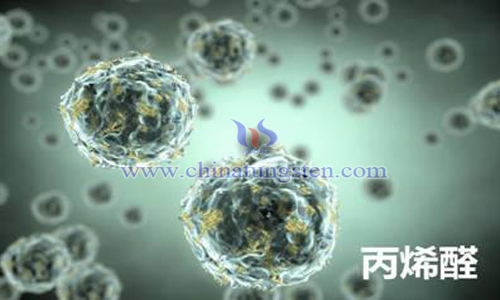Preparation of Acrolein by Phosphotungstic Acid Modified Catalyst
- Details
- Category: Tungsten Information
- Published on Tuesday, 02 July 2019 13:34
Acrolein is an important fine chemical intermediate with a wide range of applications in coatings, paper, oil, medicine, and organic synthesis industries. In recent years, with the increasing demand of animal feed additives such as methionine, glutaraldehyde, pesticides and water treatment agents on the market, and the large excess of bio-glycerol, the rapid development of the acrolein industry has been promoted.
The acrolein preparation methods mainly include: formaldehyde acetaldehyde gas phase condensation method, propylene ether pyrolysis method, propylene or propane oxidation method, but these methods mainly rely on the development of the petroleum industry. While petroleum is a non-renewable resource. With the continuous depletion of petroleum resources and rising oil prices, production costs continue to increase, so bio-glycerol as a raw material to prepare acrolein has become a hot spot, and this new method will bring good economic and social benefits.

In the process of producing acrolein from glycerol, the key is the catalyst. Generally a transition metal, a rare metal oxide-modified supported heteropoly acid is used as a catalyst, and a glycerin solution and an inert solvent are driven into a fixed bed reactor through a micro pump, and a certain airspeed is controlled. The most common heteropolyacid catalyst is phosphotungstic acid.
Some scholars have published an academic paper on the preparation of acrolein and its carbon deposition treatment. Based on the preparation of synthetic phosphotungstic acid modified catalyst, the high selectivity of glycerol is converted to acrolein. The specific steps include :
Step 1: Preparation of CuO modified Al2O3 support
It was prepared by an equal volume impregnation method. First, 10.0 g of 18 to 30 mesh Al2O3 was weighed. Then, 1.36 g of Cu(NO3)2•6H2O was weighed and dissolved in 12 ml of distilled water to prepare an aqueous solution. Finally, 10.0 g of the weighed Al2O3 was poured into the prepared solution, ultrasonically shaken for 2 hours, immersed for 24 hours, placed in a horse boiling furnace, and calcined at 300 ° C to obtain CuO-Al 2 O 3, which was used.
Step 2: Preparation of CuO-Al2O3/H3PW12O40 catalyst
It is also prepared by an equal volume impregnation method. First, 10.0 g of a CuO-modified Al2O3 carrier was weighed. Then, 4.29 g of phosphotungstic acid was weighed and dissolved in 12 ml of distilled water to prepare an aqueous solution. Finally, the AlOO3 modified by CuO was poured into the prepared phosphotungstic acid solution, ultrasonically shaken for 1 hour, immersed for 24 hours, placed in an oven, and baked at 100 ° C to obtain CuO-Al2O3/H3PW12O40. catalyst.
Step 3: 5 ml of the catalyst prepared above was charged into a fixed bed reactor for reaction. Specific reaction conditions: temperature 300 ° C, the concentration of glycerin aqueous solution is 30%, the fixed bed volume space velocity is 1 h-1, and the amount of n-hexane added is 20% of the glycerin solution. The reaction was sampled every 1 hour for on-line analysis. After 24 hours of continuous reaction, the amount of carbon deposited was measured. Experimental results: the carbon deposition amount was 13.58%, the acrolein selectivity was 77.5%, and the glycerin conversion rate was 90.1%.
The above process solves the problem of easy carbon deposition on the catalyst, and the prepared catalyst has high activity, high selectivity of acrolein and conversion of glycerol, and the process is “clean” and easy to separate, and is an environmentally friendly process for preparing acrolein.
- Tungsten Manufacturer & Supplier, Chinatungsten Online: www.chinatungsten.com
- Tungsten News & Prices of China Tungsten Industry Association: www.ctia.com.cn
- Molybdenum News & Price: news.molybdenum.com.cn
- Tel.: 86 592 5129696; Fax: 86 592 5129797; Email: sales@chinatungsten.com



 sales@chinatungsten.com
sales@chinatungsten.com